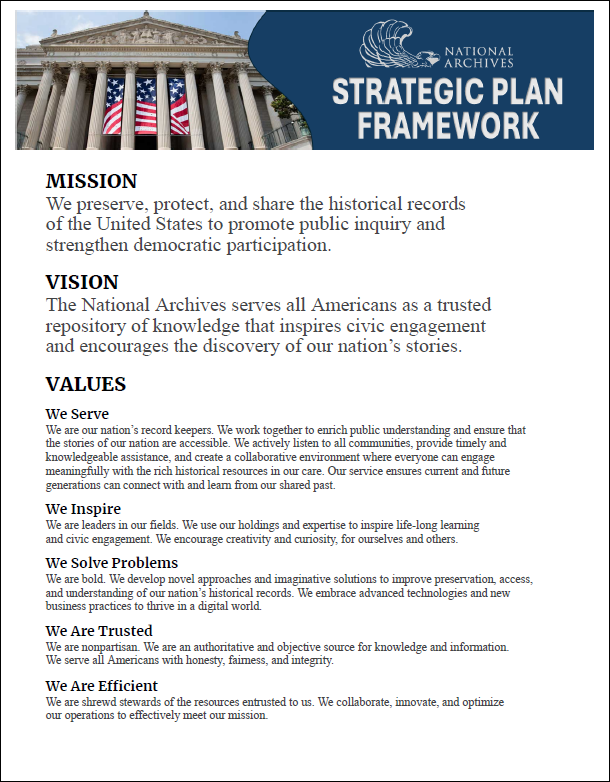
National Archives Strategic Plan
NARA's FY 2026-2030 Strategic Plan Framework
The National Archives is drafting its 2026-2030 Strategic Plan. This Strategic Plan Framework articulates clearly our mission, vision, values, and high-level goals. This document is the starting point for the development of the full plan and our roadmap for the future.
